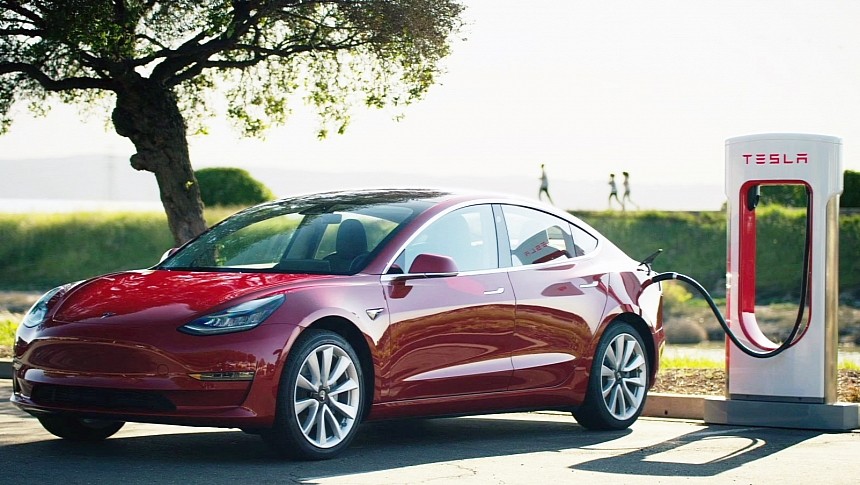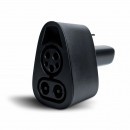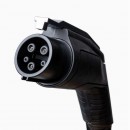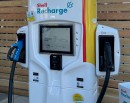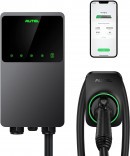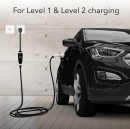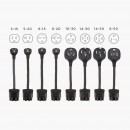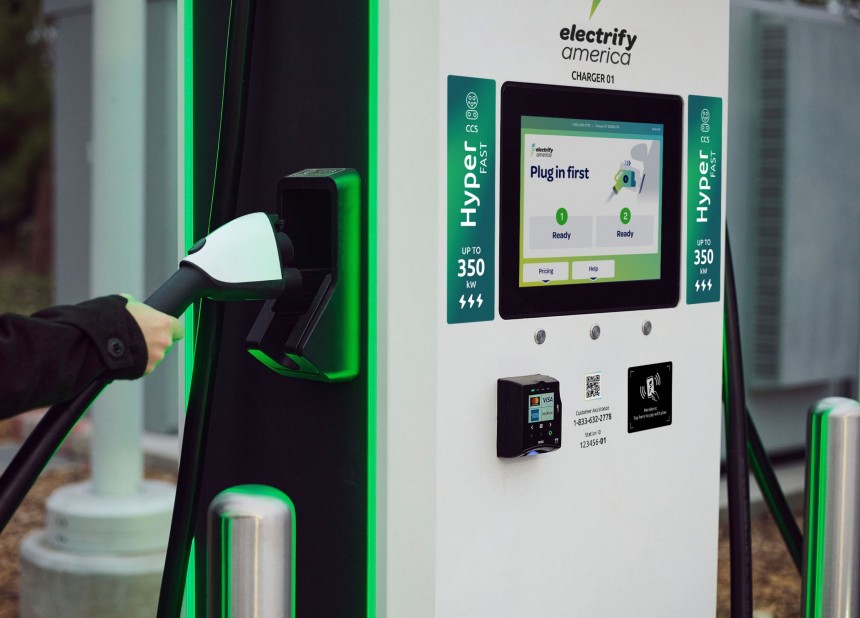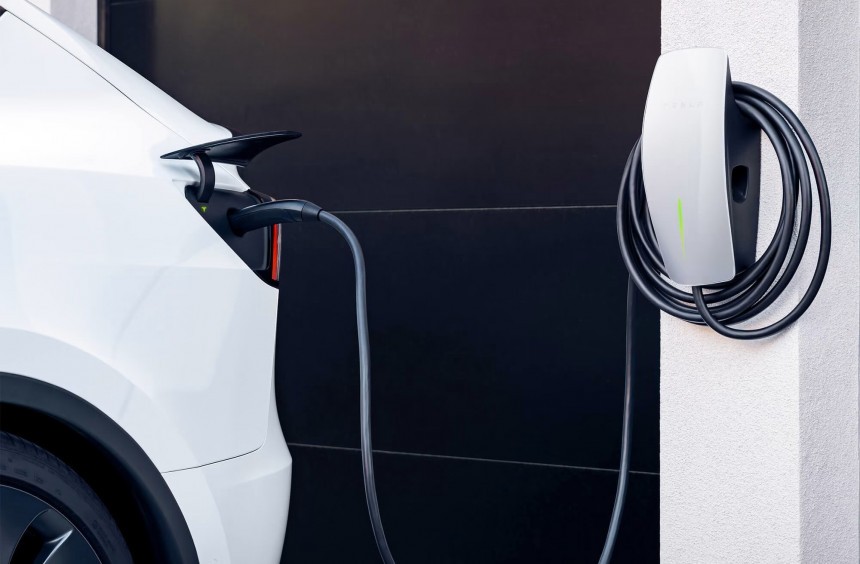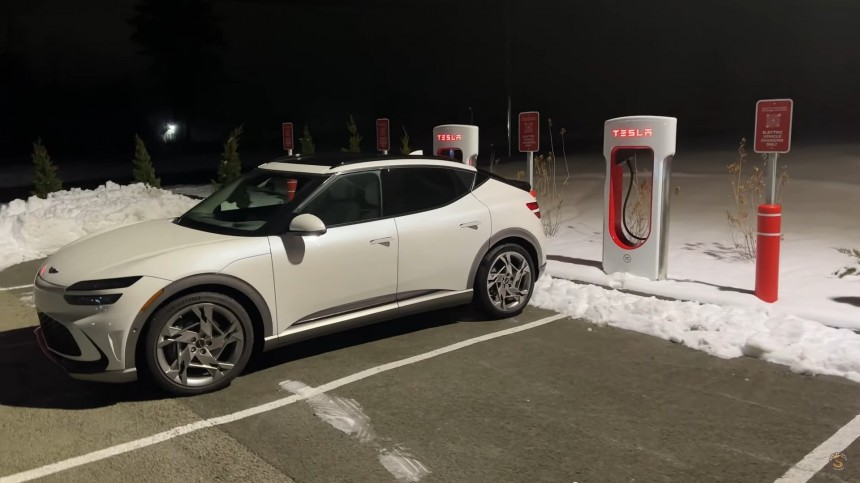EV owners don't necessarily need to understand the inner workings of a charger to charge their cars. Still, given the many types of chargers available (each with its own plug type, power level, and even charging protocol), understanding the differences will get you one step closer to becoming an EV expert and help you avoid some rookie mistakes along the way.
Charging an electric vehicle can be as straightforward as filling up the tank at a gas station. Still, the EV world is far more complex than the ICE landscape in this regard. There's a real fragmentation in charging standards, type of plugs, alternative versus direct current, and power levels. You don't need to remember everything, but a basic understanding will help you make the most out of your EV. Thankfully, many differences are related to various markets and regions, but even in the US, things vary quite a lot.
Before diving into the murkiness of EV charging, I'll start by reminding you that there are several plug types in use in the US, and that doesn't even scratch the surface. While Tesla has always had its proprietary connector, the other US carmakers have adopted the CCS Type 1 plug, an industry standard. That, besides the CHAdeMO connector used by the Nisan Leaf and Mitsubishi Outlander PHEV. Recently, Tesla began a rather successful push to make its plug the 'de facto' charging plug in the US, under the North American Charging Standard (NACS) name.
This will significantly simplify the life of EV owners in the future, as they will not have to think about which charger to choose and whether they have the right adapter. With all the public charging stations offering the same plug and, hopefully, the same charging protocol, interoperability should help accelerate EV adoption. Still, this will only happen with electric vehicles built from 2025 onwards, so it will be long before all EVs are equal. Until then, it's worth knowing what your electric car requires and which chargers are the best for home or public charging.
The CCS2, or Combo 2, which is the plug Europe (and other regions) uses, features a Type 2 connector and two DC contacts. The main advantage of the Type 2 connector is that it can supply three-phase AC current to the cars, thus increasing the power capability. Still, in a Combo 2 plug, the three-phase connectors are missing on the DC fast charger side, although the car still has them to allow non-CCS AC charging.
Many Tesla owners mocked the CCS plug for being bulky, especially compared to Tesla's NACS. Intriguingly, Tesla still uses the CCS protocols for communications and plug & charge features in newer vehicles. This allows Tesla owners to charge at CCS stations using an adapter. Older cars need a hardware retrofit to support the CCS protocol and charging at third-party stations.
Like the CCS2 plug, the NACS plug only has the communication and protective earth pins alongside the two DC contacts. Tesla designed the charging port on its vehicles to accept both DC and AC charging using the same pins, which makes the NACS plug more compact. Starting in 2025, more carmakers will use NACS instead of CCS in the US. So far, Ford, GM, Rivian, Mercedes-Benz, Volvo, and Polestar have announced adopting the NACS standard. Other carmakers, including Stellantis, Volkswagen, and Hyundai-Kia, are still unsure about the NACS benefits but are evaluating a switch.
Both Level 1 and Level 2 chargers are AC chargers because they transfer alternative current to the vehicles. The car's onboard AC charger then converts the voltage (120 volts or 240 volts) to whatever voltage it needs (usually 400V or 800V). What people like to call Level-3 chargers, on the other hand, use direct current (DC) to charge your EV. Full disclosure: there are no Level-3 chargers, despite being a popular term describing DC fast charging. I'll explain why that is below, but first, let's start with... the beginning.
The Level-1 chargers are best suited for plug-in hybrids because their batteries are small. Keep in mind that, given the low current, they will not provide enough power to preheat or precool the cabin in extreme temperatures while connected to the grid. Nevertheless, automakers almost always include a Level-1 charger with their EVs because it's small, cheap, and can be plugged in almost anywhere.
If you're lucky, your EV comes with a portable charger that supports both Level-1 and Level-2 chargers via interchangeable pigtail cords. The Tesla Mobile connector is such a device, but other carmakers like Ford offer something similar. Tesla Mobile connector has a maximum rating of 32 amps when connected to a 40-amp circuit, which is enough for most owners.
If you're shopping for a Level-1 charger, you cannot go wrong with the Lectron NEMA 5-15 Level 1 EV Charger, one of the best-rated chargers of this type on Amazon. It's a portable charger with a 21-foot cable and advanced protection features that can replace the factory-issued charger.
If you want more flexibility, the Lectron Leve 1/Level 2 portable charger supports 120-volt and 240-volt connections thanks to the interchangeable plugs. It offers up to 12 amps when plugged into a NEMA 5-15 receptacle for Level-1 charging and can go as high as 32 amps on a NEMA 14-50 connection.
As implied above, Level-2 chargers offer the best home charging solution for your electric vehicle: the highest AC charging speeds, adding 5-60 miles of range per hour to your EV, depending on the battery capacity and the power supported by your 240-volt connection. Level 2 chargers can deliver 12, 16, 20, 24, 32, 40, 48, or 64 amps, and the more intelligent of them can throttle down to lower currents to accommodate less robust circuits.
Every EV owner should have a Level-2 charger, be it a wall connector or a portable solution. If you have a dedicated 240-volt circuit with enough power capabilities, it's best to install a wired charger matching the power available. If you opt for a pluggable charger, you need to take into account the various plugs that exist, depending on the amperage they support. Tesla lists no less than seven Level-2 adapters, with amperage between 20 amps and 50 amps.
If you're looking for a Level-2 portable charger, the Lectron offers a NEMA 14-50 charger with up to 32 amps for $319. It has a 21-foot cable for maximum convenience. Thanks to the J1772 connector, it is compatible with all electric vehicles and plug-in hybrids on the market, except Tesla.
Autel produces some of the best Level 2 wall charges on the market. The MaxiCharge Home EV charger can charge your EV in a jiffy, thanks to its 50-amp capability. It also offers remote control features via WiFi/Bluetooth and has a 25-foot cable, for $599.
A cheaper solution ($399) from the same vendor is the Smart EV Charger, which offers the same features, but only 32 amps over a NEMA 6-50 plug. This is a cheaper 50-amp connection with only one phase that older buildings might still have.
All the above chargers are suitable for non-Tesla electric vehicles but can be used with a Tesla via a J1772/NACS adapter. Still, Tesla owners shouldn't settle for anything other than a Tesla wall charger. It can deliver up to 48 amps and supports variable amperage, with available configurations between 12 amps and 48 amps.
DC fast charging can be many times faster than Level-2 charging, even when it works on an 80-amps connection. In that case, the maximum power it can send to an EV is 19.2 kW, which is almost nothing compared to the fastest DC fast chargers. They can pump out 350 kW of power or more, which is 20 times faster than the best Level-2 charger. Most Tesla fast chargers, also known as V3 Superchargers, can deliver 250 kW.
Newer V4 Superchargers started installing in Europe, although they are not yet any faster. In the long run, the V4 Superchargers should be able to transfer more power to the car, up to 1 MW. This is needed to charge the Tesla Semi and, potentially, the upcoming Cybertruck. It should also deliver a higher voltage to support 800-volt electric vehicles.
The EVs with an 800-volt architecture, such as the Porsche Taycan, Lucid Air, Hyundai Ioniq 5 and Ioniq 6, or Kia EV6, have seen limited success charging at a 400-volt DC fast charger. In that case, an onboard DC-DC converter needs to elevate the voltage supplied by the charger to the 800 volts the battery needs. Most onboard DC-DC converters have limited power capabilities, usually topping at 50 kW, which isn't much.
This is why Lucid and Hyundai-Kia don't want to jump on the NACS bandwagon. Their onboard DC-DC converters are limited to 50 kW of power, and that's the maximum they get on a 400-volt fast charger such as the Tesla Supercharger. So far, third-party charging networks such as Electrify America are the only ones that can supply 800-volt charging, making it less important to have access to Tesla Superchargers.
On top of that, the voltage needs to be raised to the 400 or 800 volts the EV needs, and the AC has to be rectified to become DC. The high-power connection and the power electronics are expensive, so few individuals would afford a DC fast charger installed at home. There's a reason why public DC fast charging is far more costly than AC charging at home. People still use DC fast charging, though, because it's a quick and convenient way to charge an EV while on the road.
There's another thing you need to consider when fast charging. It may be quick, but it also accelerates wear because it puts more strain on the battery. The more you fast charge your EV, the quicker the battery will degrade. It's best to use fast charging on road trips when it makes more sense, thanks to the short charging times. Use AC charging overnight at the destination or in parking lots whenever you can.
A Level-2 AC charger is the best way to charge an EV, offering a blend of fast charging speeds, low tariffs, and the most negligible battery wear.
Before diving into the murkiness of EV charging, I'll start by reminding you that there are several plug types in use in the US, and that doesn't even scratch the surface. While Tesla has always had its proprietary connector, the other US carmakers have adopted the CCS Type 1 plug, an industry standard. That, besides the CHAdeMO connector used by the Nisan Leaf and Mitsubishi Outlander PHEV. Recently, Tesla began a rather successful push to make its plug the 'de facto' charging plug in the US, under the North American Charging Standard (NACS) name.
What are Type 1 and Type 2 charging plugs, and how do they differ from NACS?
While the industry bodies like CharIN consider the Combined Charging System (CCS) as offering the best features, it's worth noting that there isn't one CCS standard, but actually two. The CCS1, or Combo 1, is mainly used in the United States. It combines a J1772 (Type 1) connector with two additional direct current (DC) contacts to allow high-power DC fast charging.The CCS2, or Combo 2, which is the plug Europe (and other regions) uses, features a Type 2 connector and two DC contacts. The main advantage of the Type 2 connector is that it can supply three-phase AC current to the cars, thus increasing the power capability. Still, in a Combo 2 plug, the three-phase connectors are missing on the DC fast charger side, although the car still has them to allow non-CCS AC charging.
Many Tesla owners mocked the CCS plug for being bulky, especially compared to Tesla's NACS. Intriguingly, Tesla still uses the CCS protocols for communications and plug & charge features in newer vehicles. This allows Tesla owners to charge at CCS stations using an adapter. Older cars need a hardware retrofit to support the CCS protocol and charging at third-party stations.
Like the CCS2 plug, the NACS plug only has the communication and protective earth pins alongside the two DC contacts. Tesla designed the charging port on its vehicles to accept both DC and AC charging using the same pins, which makes the NACS plug more compact. Starting in 2025, more carmakers will use NACS instead of CCS in the US. So far, Ford, GM, Rivian, Mercedes-Benz, Volvo, and Polestar have announced adopting the NACS standard. Other carmakers, including Stellantis, Volkswagen, and Hyundai-Kia, are still unsure about the NACS benefits but are evaluating a switch.
What are Level-1, Level-2, and Level-3 charging, and which is better?
If you own an electric vehicle or plan to buy one, chances are you've heard of Level 1, Level 2, and even Level 3 charging. These terms apply to Tesla and other brands and appear to be associated with charging speeds. The higher the charging level, the faster your car will charge. While this is mostly true, the levels actually relate to the voltage input.Both Level 1 and Level 2 chargers are AC chargers because they transfer alternative current to the vehicles. The car's onboard AC charger then converts the voltage (120 volts or 240 volts) to whatever voltage it needs (usually 400V or 800V). What people like to call Level-3 chargers, on the other hand, use direct current (DC) to charge your EV. Full disclosure: there are no Level-3 chargers, despite being a popular term describing DC fast charging. I'll explain why that is below, but first, let's start with... the beginning.
Level 1 Charging
Level-1 chargers plug into a regular household receptacle and are thus fed with 120 volts. The output current is limited to 10 or 12 amps because they are designed to be used on a 15- or 20-amp circuit along with other electric appliances. Although it can be used to charge an EV (it could take days, depending on the battery capacity), the low-current capability earned it the name of "trickle charging."The Level-1 chargers are best suited for plug-in hybrids because their batteries are small. Keep in mind that, given the low current, they will not provide enough power to preheat or precool the cabin in extreme temperatures while connected to the grid. Nevertheless, automakers almost always include a Level-1 charger with their EVs because it's small, cheap, and can be plugged in almost anywhere.
If you're lucky, your EV comes with a portable charger that supports both Level-1 and Level-2 chargers via interchangeable pigtail cords. The Tesla Mobile connector is such a device, but other carmakers like Ford offer something similar. Tesla Mobile connector has a maximum rating of 32 amps when connected to a 40-amp circuit, which is enough for most owners.
If you want more flexibility, the Lectron Leve 1/Level 2 portable charger supports 120-volt and 240-volt connections thanks to the interchangeable plugs. It offers up to 12 amps when plugged into a NEMA 5-15 receptacle for Level-1 charging and can go as high as 32 amps on a NEMA 14-50 connection.
Level 2 Charging
You've seen what Level-1 chargers can and (mostly) can't do due to the limitation of the 120-volt circuit. Level-2 chargers, on the other hand, plug into a 240-volt outlet or are hardwired to such circuits. If your house has a 240-volt connection for appliances like clothes dryers, electric ovens, or air conditioners, you're all set. Mostly. That's because the voltage is not everything, and Level-2 chargers can deliver anything between 12 and 64 amps. The real question: does your electric circuit support such high currents? The answer: it's best to consult with an authorized electrician.As implied above, Level-2 chargers offer the best home charging solution for your electric vehicle: the highest AC charging speeds, adding 5-60 miles of range per hour to your EV, depending on the battery capacity and the power supported by your 240-volt connection. Level 2 chargers can deliver 12, 16, 20, 24, 32, 40, 48, or 64 amps, and the more intelligent of them can throttle down to lower currents to accommodate less robust circuits.
Every EV owner should have a Level-2 charger, be it a wall connector or a portable solution. If you have a dedicated 240-volt circuit with enough power capabilities, it's best to install a wired charger matching the power available. If you opt for a pluggable charger, you need to take into account the various plugs that exist, depending on the amperage they support. Tesla lists no less than seven Level-2 adapters, with amperage between 20 amps and 50 amps.
Autel produces some of the best Level 2 wall charges on the market. The MaxiCharge Home EV charger can charge your EV in a jiffy, thanks to its 50-amp capability. It also offers remote control features via WiFi/Bluetooth and has a 25-foot cable, for $599.
A cheaper solution ($399) from the same vendor is the Smart EV Charger, which offers the same features, but only 32 amps over a NEMA 6-50 plug. This is a cheaper 50-amp connection with only one phase that older buildings might still have.
All the above chargers are suitable for non-Tesla electric vehicles but can be used with a Tesla via a J1772/NACS adapter. Still, Tesla owners shouldn't settle for anything other than a Tesla wall charger. It can deliver up to 48 amps and supports variable amperage, with available configurations between 12 amps and 48 amps.
Level 3 Charging
Wait, didn't I say there's no Level-3 charging? Well, there isn't. People assumed that something faster than Level 2 should be called Level 3. This being the DC fast-charging, they started calling it Level 3 charging. The truth is SAE never called DC charging Level 3. Instead, there were two instances when the Society of Automotive Engineers (SAE) proposed a Level 3 charging: in 1996 and 2001. One of them was for DC charging, and the other was for AC, but neither materialized.DC fast charging can be many times faster than Level-2 charging, even when it works on an 80-amps connection. In that case, the maximum power it can send to an EV is 19.2 kW, which is almost nothing compared to the fastest DC fast chargers. They can pump out 350 kW of power or more, which is 20 times faster than the best Level-2 charger. Most Tesla fast chargers, also known as V3 Superchargers, can deliver 250 kW.
Newer V4 Superchargers started installing in Europe, although they are not yet any faster. In the long run, the V4 Superchargers should be able to transfer more power to the car, up to 1 MW. This is needed to charge the Tesla Semi and, potentially, the upcoming Cybertruck. It should also deliver a higher voltage to support 800-volt electric vehicles.
What about voltage?
This brings us to another schism in the electric vehicle arena. Most EVs out there, including all Tesla models, use a 400-volt high-voltage system. Still, Porsche, Lucid, and newer Hyundai and Kia EVs developed on the E-GMP platform feature an 800-volt architecture. While 400-volt EVs have no problem charging on 800-volt chargers because they also support 400-volt EVs, the opposite is more complicated.The EVs with an 800-volt architecture, such as the Porsche Taycan, Lucid Air, Hyundai Ioniq 5 and Ioniq 6, or Kia EV6, have seen limited success charging at a 400-volt DC fast charger. In that case, an onboard DC-DC converter needs to elevate the voltage supplied by the charger to the 800 volts the battery needs. Most onboard DC-DC converters have limited power capabilities, usually topping at 50 kW, which isn't much.
This is why Lucid and Hyundai-Kia don't want to jump on the NACS bandwagon. Their onboard DC-DC converters are limited to 50 kW of power, and that's the maximum they get on a 400-volt fast charger such as the Tesla Supercharger. So far, third-party charging networks such as Electrify America are the only ones that can supply 800-volt charging, making it less important to have access to Tesla Superchargers.
Why can't people have DC fast charging at home?
Although DC fast charging is the quickest way to charge your electric vehicle, this doesn't mean it's entirely "better" than AC charging. Several things make DC fast charging impractical for home use. First, it is prohibitively expensive. The charger needs a stable supply with much more power than most homes are allowed to draw from the grid.On top of that, the voltage needs to be raised to the 400 or 800 volts the EV needs, and the AC has to be rectified to become DC. The high-power connection and the power electronics are expensive, so few individuals would afford a DC fast charger installed at home. There's a reason why public DC fast charging is far more costly than AC charging at home. People still use DC fast charging, though, because it's a quick and convenient way to charge an EV while on the road.
There's another thing you need to consider when fast charging. It may be quick, but it also accelerates wear because it puts more strain on the battery. The more you fast charge your EV, the quicker the battery will degrade. It's best to use fast charging on road trips when it makes more sense, thanks to the short charging times. Use AC charging overnight at the destination or in parking lots whenever you can.
Frequently Asked Questions
What is the best way to charge an electric vehicle?A Level-2 AC charger is the best way to charge an EV, offering a blend of fast charging speeds, low tariffs, and the most negligible battery wear.
